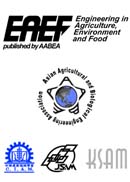Volume 6, Issue 1
Displaying 1-6 of 6 articles from this issue
- |<
- <
- 1
- >
- >|
Research Paper
-
Article type: Research Paper
2013 Volume 6 Issue 1 Pages 1-6
Published: January 01, 2013
Released on J-STAGE: January 01, 2013
Download PDF (527K) -
Article type: Research Paper
2013 Volume 6 Issue 1 Pages 7-12
Published: January 01, 2013
Released on J-STAGE: January 01, 2013
Download PDF (957K) -
Article type: Research Paper
2013 Volume 6 Issue 1 Pages 13-19
Published: January 01, 2013
Released on J-STAGE: January 01, 2013
Download PDF (637K) -
Article type: Research Paper
2013 Volume 6 Issue 1 Pages 20-26
Published: January 01, 2013
Released on J-STAGE: January 01, 2013
Download PDF (460K) -
Article type: Research Paper
2013 Volume 6 Issue 1 Pages 27-33
Published: January 01, 2013
Released on J-STAGE: January 01, 2013
Download PDF (2858K)
Technical Paper
-
Article type: Technical Paper
2013 Volume 6 Issue 1 Pages 34-40
Published: January 01, 2013
Released on J-STAGE: January 01, 2013
Download PDF (429K)
- |<
- <
- 1
- >
- >|
